On most of the southern Cape of South Africa, you see a lot of white quartzite of the Table Mountain Group. But when my wife and I were driving back to Cape Town from Hermanus (and Cape Agulhas), just after we stopped to check out Rooi Els, I saw something that was a dark green. It stood out! We were heading north on the R44, along the eastern shore of False Bay. When you’ve been down there for a couple of weeks and you see something that’s not white, then you think, “Huh, I should stop and check that out!”
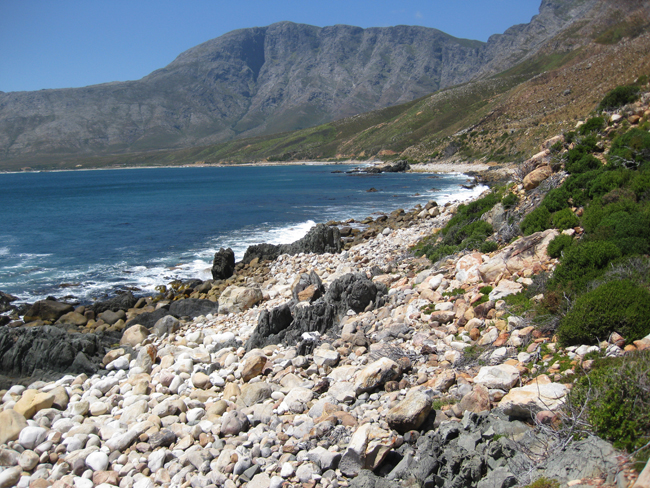
Note all those white cobbles and boulders: quartzite, every single bloody last one of them!
The greenish gray rocks are Malmesbury Group sedimentary rocks of probable Neoproterozoic age, which we have seen previously, both at this outcrop and also exposed at Sea Point, where they are intruded by the 540 Ma Cape Granite. This outcrop stood out to my eye as we drove along the road because it was so differently colored than most of the rocks we had seen so far. I asked Lily to pull over so I could clamber down the slope and examine it. I’m pleased that I did, because I got nice clean looks at some original sedimentary structures exposed there, as well as some deformational overprints.
Here, for instance, is a nice crisp contact between fine-grained mudrock (left) and coarser-grained sandstone (right), the sort of thing that in turbidites typically indicates the base of a turbidite. If so, the younging direction is to the right, and we would expect to see a decrease in grain size in that direction…
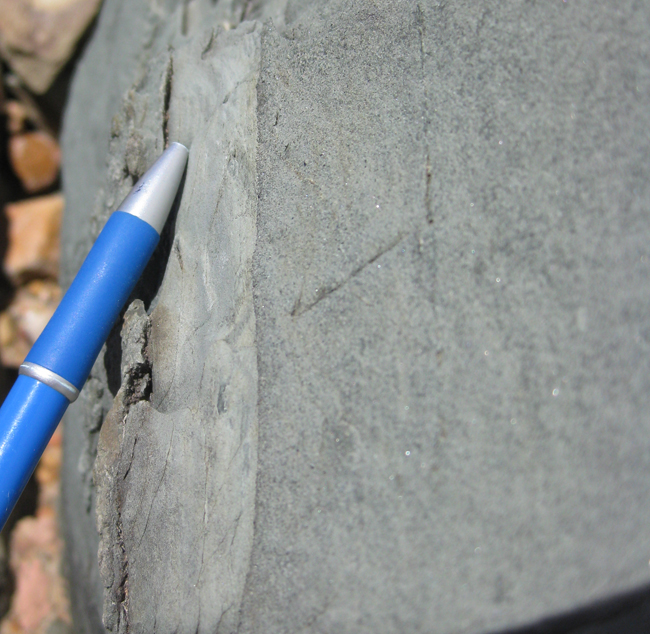
Now, this is pretty umambiguous: it’s a small batch of flame structures formed in soft-sediment deformation as a bolus of heavy sand got dumped atop goopy mud. The sand sagged downward and the mud squirted upward between the “pillows” of drooping sand.
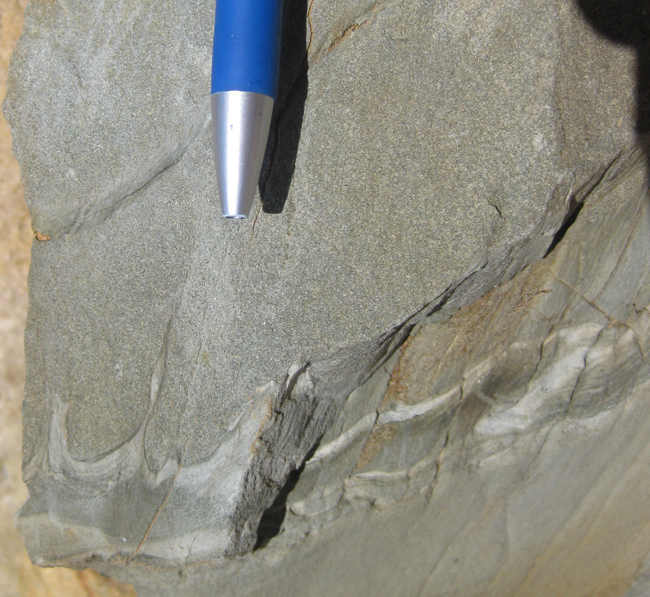
Flame structures point to stratigraphic “up;” they are a great geopetal structure.
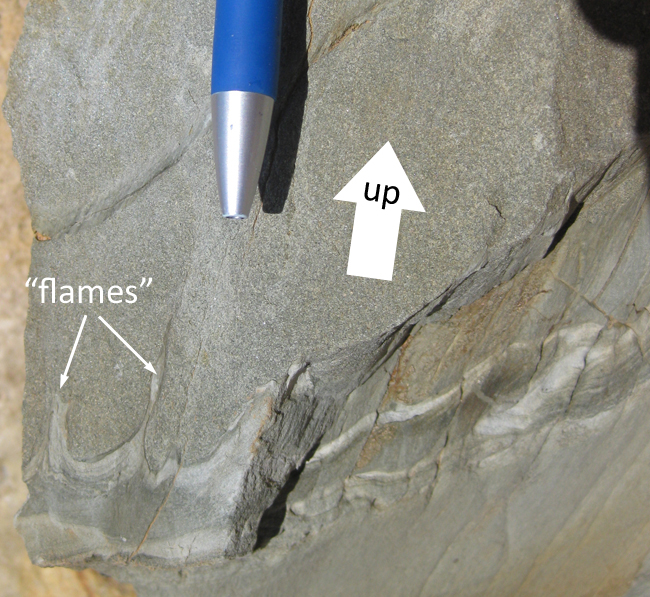
Next, we see a small sample showing the top of one turbidite (greenish gray and fine-grained) and the based of another, which is light tan-yellow in color. In the upper bed, you can see cross-bedding:

Annotated version, showing the clues and resulting interpretative information that can be squeezed from a rock like this:
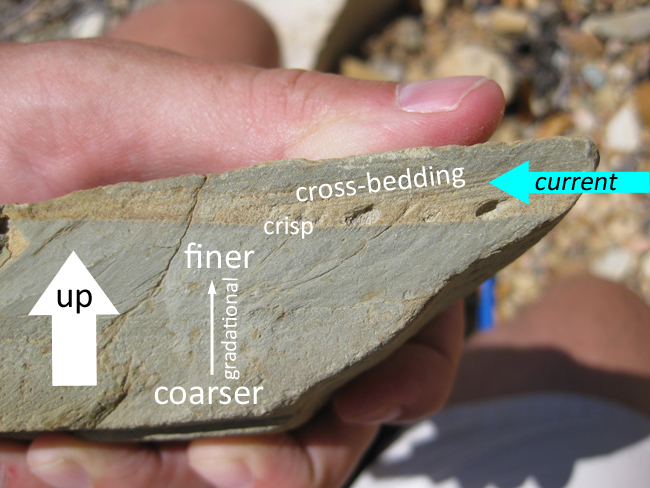
But it wasn’t all primary fun and games at this location. There were some secondary (or tectonic) structures too. One that jumped out at me was a series of en echelon tension fractures infilled with some white mineral (quartz? I didn’t bother to identify it…):
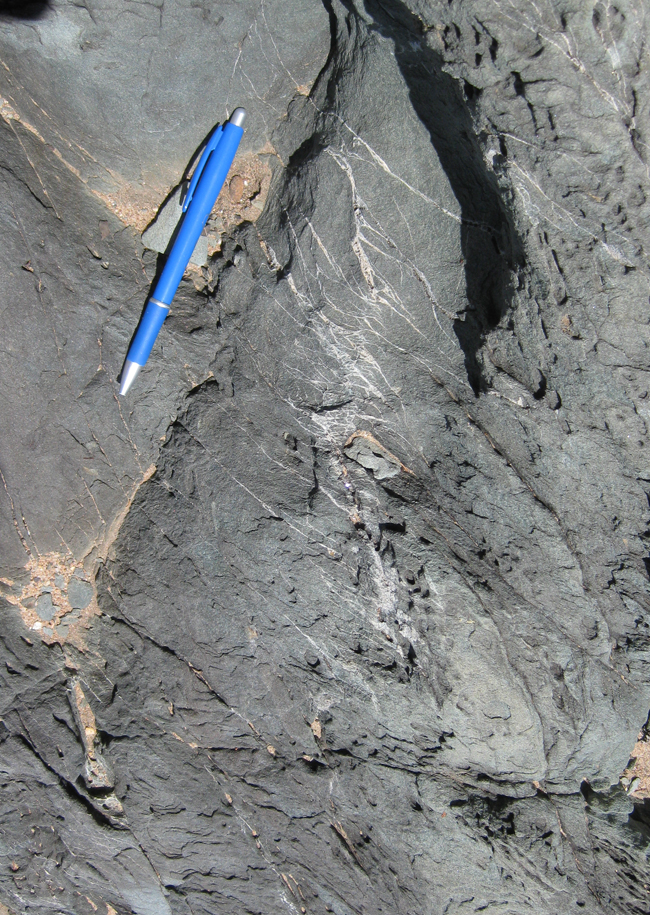
Looking to the east, across the road, there were also folds distrupting the turbidite strata, and in the muddiest layers, some fabric development in the form of cleavage:
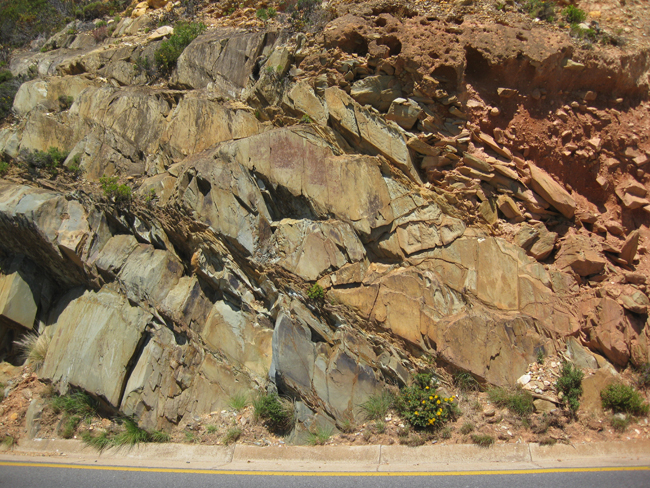
Your eye might be drawn to the colluvium at the far right (same stuff we saw at this outcrop last week), but that’s not why I took the photo. Instead, zoom in on the tilted layers of Malmesbury sediments, and note that the muddier layers appear to show a cleavage that dips steeply to the right (south). We can get closer (but not too close, as the traffic made it unsafe):
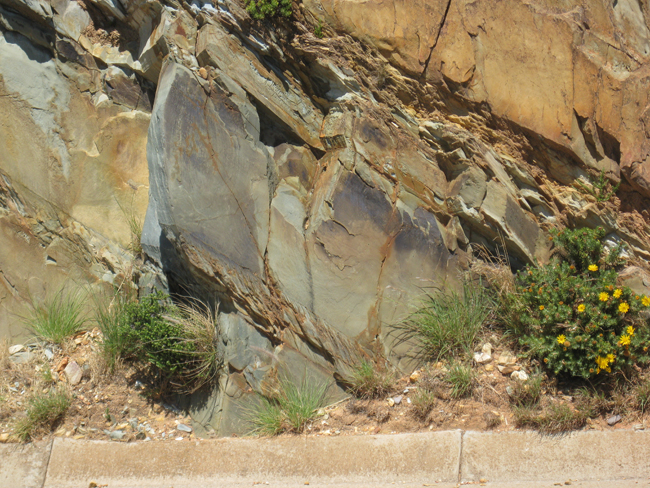
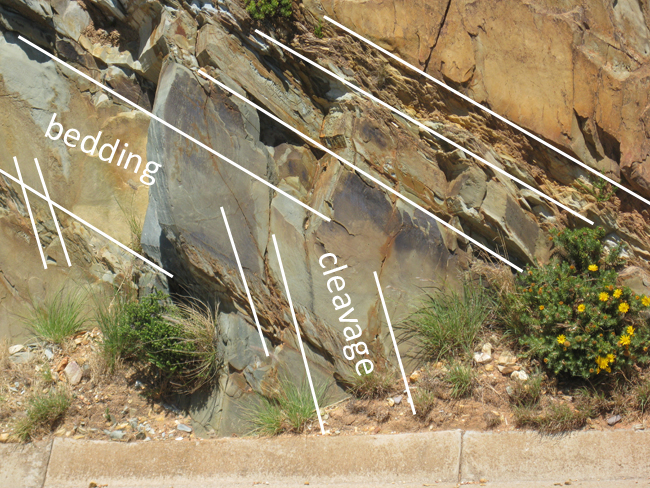
These strata are apparently on the limb of a fold – an anticline to the left (north), and/or a syncline to the right (south).

green is glauconite?
Probably chlorite due to burial metamorphism; that’s my guess.